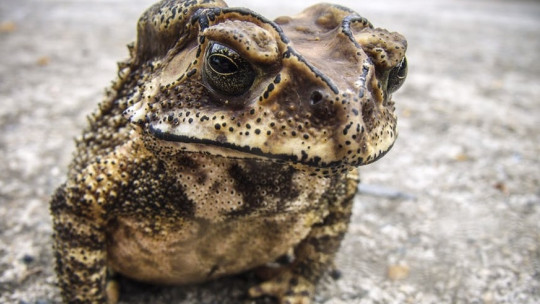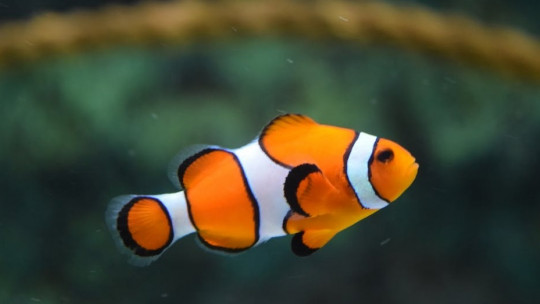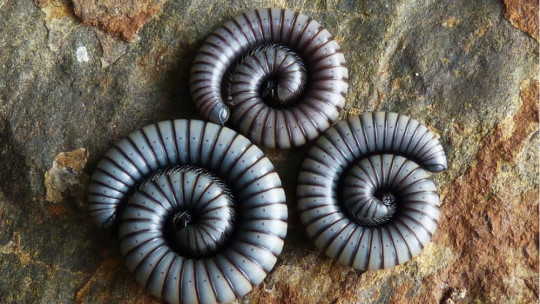
Those fairy tales in which the princess kissed a toad so that he would become a prince, and thus end up happily ever after, would not have been possible if any of these princesses suffered from buphonophobia.
This specific phobia of a specific type of amphibian is not very disabling, but it is really unpleasant for those who suffer from it. Next We will see what buphonophobia is as well as its causes, symptoms and possible treatment.
What is buphonophobia?
By buphonophobia we understand one of the anxiety disorders according to which the person experiences an exaggerated and irrational fear of toads It differs from batrachophobia in that in the latter the feeling of fear encompasses everything related to amphibians including frogs, newts and salamanders.
This type of phobia never tends to be strongly disabling except in those exceptions in which the person must regularly live with this type of animal. In some very extreme cases, people who suffer from buphonophobia may even think that the animal can grow in size until it can devour them.
Nevertheless, This anxiety disorder differs in each of the people who suffer from it due to individual differences in thought patterns associated with frogs and toads.
Unlike the simple animosity that each person may feel when encountering one of these amphibians, in buphonophobia the individual can recognize that the animal does not represent a threat in itself. Despite this, she is unable to resist the exacerbated fear it provokes.
Like the rest of the existing phobias, a person with buphonophobia will surely experience a series of emotions and physical manifestations typical of an extremely high state of anxiety.
Your symptoms
As indicated in the first point, bufonophobia belongs to the classification of anxiety disorders. Therefore, exposing the person to the phobic situation or stimulus, in this case toads, will trigger an extreme response.
This symptomatology common to the rest of phobias It can be divided into 3 groups: physical symptoms, cognitive symptoms and behavioral symptoms.
1. Physical symptoms
The appearance or sighting of the phobic stimulus causes hyperactivity of the autonomic nervous system that triggers a large number of changes and alterations in the body. These changes include:
2. Cognitive symptoms
The person who suffers from buphonophobia associates toads and similar amphibians a series of irrational beliefs These distorted ideas of reality favor the development of this phobia, and are characterized by the person assimilating a series of poorly founded beliefs about toads, as well as their attributes and qualities.
This cognitive symptomatology takes shape in the following manifestations:
3. Behavioral symptoms
Every anxiety disorder of this nature is accompanied by a series of symptoms or behavioral manifestations that appear as a reaction to the aversive stimulus.
These behaviors or behaviors have the objective either the avoidance of the feared situation, or the flight once the stimulus appears. The latter are known as escape behaviors.
Behaviors that aim to avoid encountering toads and/or frogs refer to all those behaviors or acts that the person performs to avoid the possibility of encountering them. Thus the experience of feelings of anguish and anxiety is momentarily avoided that these animals generate.
Regarding escape behaviors, if the person cannot avoid encountering the phobic stimulus, they will carry out all types of behaviors that allow them to escape from said situation as soon and as quickly as possible.
Which can be the causes?
Like the rest of phobias, in most cases of bufonophobia, it is practically impossible to accurately determine the origin of this irrational fear. However, we can theorize that its etiology would have the same foundation as the rest of specific anxiety disorders.
This means that a person with a genetic predisposition to suffer from an anxiety disorder who faces, at some point in their life, a traumatic emotional experience or one with a high emotional burden and related in some way to the appearance of toads or frogs, you will be much more likely to develop a phobia associated with these amphibians.
On the other hand, although there are also adults with buphonophobia, this disorder occurs mainly in children; Therefore, the theories that put learning as the starting point of the phobia have a lot of support.
These theories establish that in children, phobias are usually caused by acquisition of behaviors observed in adults, who, on some occasion, may have shown anxiety behaviors when faced with a specific stimulus. These behaviors are unconsciously assimilated by the child and encouraged until they become a phobia.
Is there a treatment?
It was already mentioned at the beginning of the article that buphonophobia does not tend to be disabling, except in those cases in which the person must live daily with toads and frogs. That is, due to the nature of the phobic stimulus, the anxiety response does not interfere with day-to-day life of the person.
However, in the few cases in which the person seeks professional help with the intention of reducing their fear of these animals, intervention through psychotherapy (specifically through cognitive-behavioral therapy) is highly effective.
Using techniques such as live exposure or systematic desensitization, accompanied by training in relaxation techniques and cognitive restructuring, the person can overcome their phobic fear and continue their life normally.








